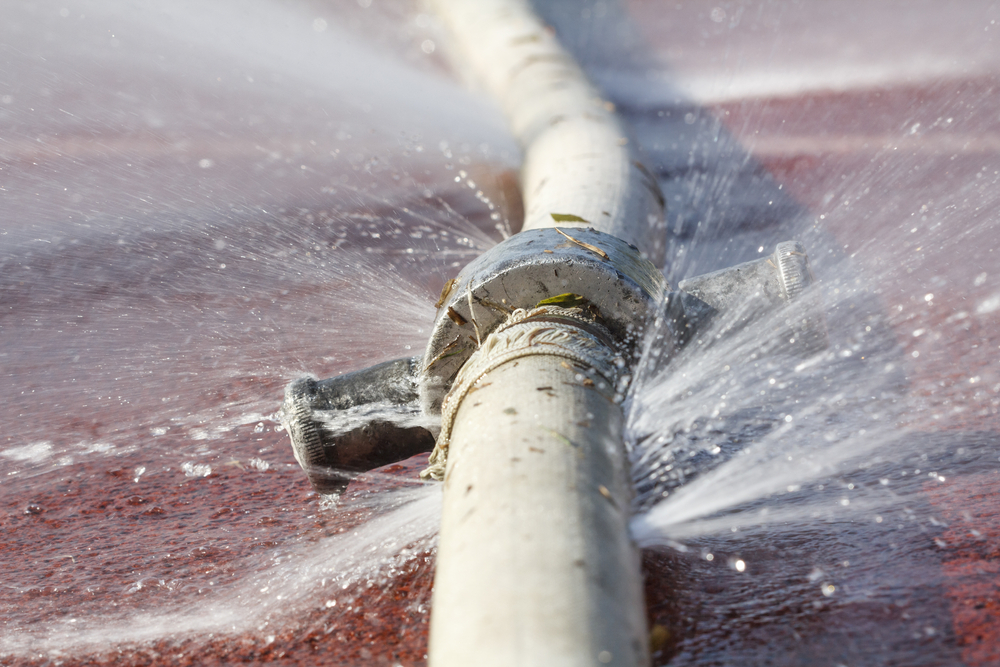 Web Content Viewer
Web Content Viewer

 Web Content Viewer
Web Content Viewer
Water losses represent one of the main problems in efficient and sustainable management of water supply systems. The difference between the water fed into the network and the water for which a bill is issued corresponds to the size of the losses that occur along the distribution chain. Their presence causes problems in the environmental (wasted resource), financial (water not paid for and thus economic damages for the operator), energy (increase in energy consumption for pumping activities), road (opening of temporary roadworks for repair) and social (risk of damage to things and persons) sectors.
The national network has an average percentage of losses of 39%, which means that 39 litres of water every 100 litres fed in are lost in the pipes, thus confirming the poor condition of the water infrastructure. Considering that the national renewal rate is 3.8 metres of piping per km of network, it would take over 250 years to replace the entire network, with a total investment requirement for the adaptation and maintenance activities estimated at about 5 billion euros per year.
Milan is one of the most virtuous provincial capitals in Italy with a percentage of network losses of 11.5%, well below the national average.
A result obtained through MM’s constant commitment to reducing water losses, as demonstrated by the figures of the past few years, with the use of more efficient intervention and management technologies supplemented by the adoption of new instruments for financing the investments.
|
Losses 1 |
|
2014 |
2015 |
2016 |
|
Network losses |
% |
10.7 |
12.2 |
11.5 |
MM regularly monitors the losses that occur along the network and adopts a strategy for reducing them, which consists of:
- analyses of losses, that is, use of common methods and terms, recognized and approved on an international level (IWA – International Water Association);
- corrective actions, that is, specific targeted operations according to the field of interest through field inspections and checks, electroacoustic measures (correlator, noise logger, geophone, acoustic water leak detector, etc.), advanced meter management and pressure control.
With regard to the problem of apparent losses2 , MM acts on the management of the meters (analysis of the age of the meters and user consumption values), laboratory tests (tests on a sample of meters at the internal laboratory) and data logging of the user consumption values (recording, transmission and analysis of the consumption profiles of specific types of user). In particular, the use of a smart metering system ensures fundamental benefits for efficient management of the water, enables pipes to be replaced and repaired quickly, and offers additional services to the customer, which include:
- daily communication of the consumption levels and data recorded through identification of abnormal behaviour (high consumption levels, losses, faults, etc.) and prompt communication;
- more accurate and regular reading of the user device through a bill based on actual consumption, reducing the number of disputes;
- drawing up of network and area reports through continuous, synchronous loss monitoring.
With regard to real (or physical) losses3 , MM carries out the following activities:
- statistical analysis and georeferencing of hidden and evident losses;
- analysis of network pipes subject to several consecutive breakages;
- drawing up of water balances using standard methods;
- management of leak location and repair campaign (asset management system);
- Pressure Management;
- Leak Detection: location of hidden leaks in the distribution system, design and performance of non-invasive relining operations on the supply and distribution network.
[1] Figures calculated using the AEEGSI “real losses” method. The 2015 figure is underestimated in that the criterion for estimating the consumption levels is based on the previous three-year period in which the volumes billed were decreasing.
[2] The apparent (or administrative) water losses are due to volumes withdrawn without authorization (illegal connections) and volumes delivered but not measured, due to imprecise or faulty meters.
[3] The real (or physical) losses are the volume of water that leaks out of the distribution system into the subsoil due to corrosion, deterioration or breakage of the pipes or faulty joints. They are calculated as the difference between the total loss and the apparent loss.
 Web Content Viewer
Web Content Viewer
 Web Content Viewer
Web Content Viewer

 Web Content Viewer
Web Content Viewer
The water networks have an average percentage loss of 39%. A quantity of 39 litres of water every 100 litres fed in is lost in the piping.
26% in Northern Italy – 46% in Central Italy – 45% in Southern Italy
(Source: Utilitalia – Istat)